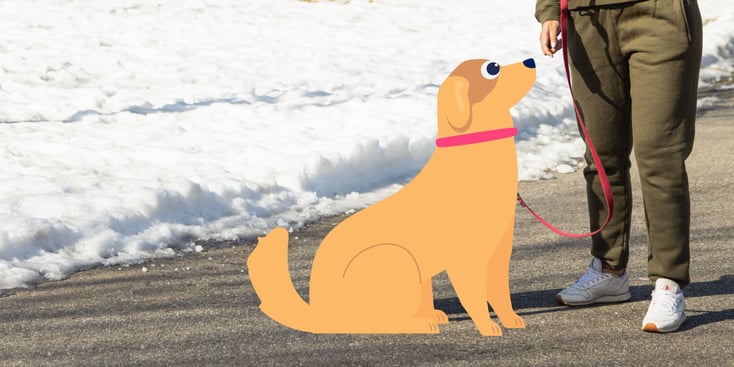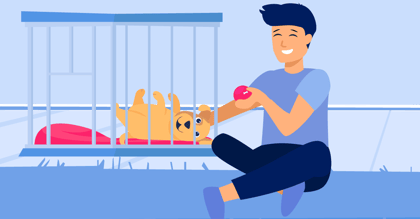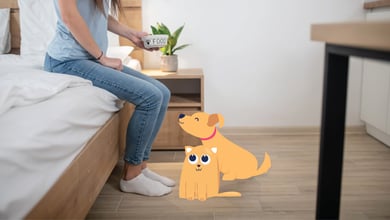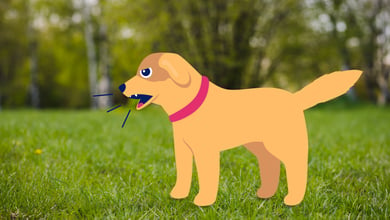How to Jumpstart Obedience Training

Table of Contents
Training your dog can feel like a big task because, well, it is a big task. However, If you take it step by step, you will find the job to be far less daunting. House training, socialization and basic commands are amongst your dog's fundamental needs. It is important to start obedience training as soon as possible to instill good behaviors in your dog and make sure that you and your dog live a happy life together.
House Training
Unless you intend to keep your dog indoors, which is not recommended, one of the first things you will need to train your dog to do is to eliminate outdoors. Crate training can be a helpful part of this training process, as dogs are less likely to go to the bathroom in a space they feel is their own.
When it comes down to it, house training is not that complicated, but this doesn't mean it's easy. Consistency, patience and diligence are key during the housebreaking process. This means regularly taking your dog out to let them eliminate in an appropriate area, especially after meal times. If you are able to stick to a schedule, it will help your dog acclimate to the routine and behaviors expected of him or her.
When your dog does go to the bathroom in a designated area, incorporate heavy positive reinforcement to encourage the behavior. This can be in the form of treats or praise. You should "throw a party" for your dog every time they do something you want them to do again. Use tone, body language, affection, and praise.
However, if after a while, your dog is still having accidents in the house, it may be more than a simple housebreaking issue. Your dog might urinate out of excitement or to express submissive behavior.
Furthermore, it could be time to call your BetterVet team to schedule a visit to make sure there are no underlying health issues, such as a UTI, that could be causing incontinence.
Leash Training
Every dog needs to know how to walk on a leash, for both safety and ease of handling. If you want to be able to take your dog out and about with you, it is imperative that you are able to walk safely with your pet whilst they are tethered to a lead.
For some dogs, it may be as simple as clipping on the leash and walking out the door. Other dogs may struggle and appear fearful when you first show them the leash. For these pups, you'll want to introduce them to the leash slowly so as to ensure they build a positive relationship with it as it will be a large part of their life.
Let your dog smell the leash then clip it on your dog's collar and let it go. Allow the dog to drag the leash around and get used to having it attached to his or her collar without you holding it. Once the dog is comfortable enough dragging around the leash, you can try holding it in a familiar area, and slowly work up to walks. Remember to treat and reinforce throughout this process. It can be scary, and your pup needs encouragement that he or she is doing a good job!
Pro-Tip: Don't allow chewing! In the beginning, many dogs view the leash as just another toy. Don't let your dog get into the habit of chewing or biting on the leash.
Keep some of its favorite toys on hand to distract the pup instead, or stop walking when your dog grabs hold of the leash and resume the walk once he or she has released it.
Socialization
Socialization is one of the most important aspects of training. Socializing your dog allows for your dog or puppy to accept new people, animals, and various places. By exposing him or her to these things early on, he or she will be less fearful, and therefore, less likely to develop reactivity to new and unfamiliar scents, situations, people and animals.
In other words, socialization is key in the prevention of behavioral problems later in life that are more challenging to solve.
Basic Commands
There are a few basic commands that are integral to the happiness and wellbeing of both you and your dog. We have compiled a list of the most important commands and how to start teaching them:
1. Look
Keeping your dog's attention on you is likely the most important command of all. Teach your dog the look command so you can always get your dog to focus on you, no matter what distractions or stimulus are present.
Start by using a treat and holding it in front of your dog's face, moving it to the right and the left and watching to see if your dog's eyes follow the treat. This is called 'lurring'. Start to move the treat to your face, and incorporate the command "look" when your dog meets your eyes.
Practice this until you no longer need the treat and your dog responds to the command without it. Move to a more distracting area, like the backyard and practice again with the treat. Once your dog has mastered it in the backyard, again move to a more distracting area, such as a park, and reintroduce the treat.
Eventually, your dog will be able to respond to the command "look" without a treat in any situation.
2. Recall/Emergency Recall
Recall is another extremely important skill that your dog must be familiar with, especially if you plan on taking your dog out into the world with you. While recall, such as the "come" command, in general is important, there will be times when your dog will refuse to come simply because he or she does not want to.
This is where emergency recall comes into play. In times of danger, such as if your dog runs in front of a moving car, using a different command word, such as "eureka!" to indicate an emergency recall will help keep your dog safe. In order for this to work, the reward for the emergency recall has to be like hitting the jackpot.
As soon as your dog comes to you after you give the command, praise him or her and begin giving the special treats. For example, my dog LOVES cheese, so he gets shredded mozzarella.
Continue to feed your dogs the treats for about 20 seconds. The idea is that in emergency situations, the dog won't find anything (e.g., other animals, people, or food) more interesting than the treats you're offering.
Once your dog has finished his or her treats, let your pup go back to whatever he or she was doing before you gave the command. This is key to making this work. One reason many dogs fail to come when they are called is that the word "come" becomes a signal that their fun is about to end.
3. Leave It
Leave it is the basic dog training command you use to tell your dog not to pick up something he or she is approaching. This command can prevent your pup from eating something harmful or chewing something you would rather not be chewed.
This cue is best used when you spot something that may interest your dog, but your dog has not picked it up yet. When your dog goes for something, have another, ideally more appealing treat ready, and use the command "leave it."
If your dog chooses to take your treat instead of the original object he or she was after, double the reward with praise and pats. Repeat this process until your dog will "leave it" without another treat present.
4. Drop It
Training a dog to drop it means that it will let go of anything he or she has picked up in their mouth. Like the leave it command, drop it can save your dog from eating something dangerous. Practice this frequently, replacing what you took from your dog's mouth with something very rewarding, such as a toy or delicious treat. Additionally, if your dog likes to play fetch, this is a great way to help train your dog to "drop it" as you are not able to throw the ball unless the ball gets dropped!
5. Sit
Sit is usually the first command people teach their dog to do. It seems pretty basic, but it can play an important role in managing unwanted behaviors. For instance, a dog can't sit and jump at the same time.
By training your dog to sit, you've begun the work needed to prevent he or her from jumping. Make your dog sit before feeding him or her, giving treats, going out the door, giving him or her a toy, etc. Sitting before receiving any reward will help your dog learn that sitting is an encouraged and celebrated behavior.
To start, get a treat and hold it up right above your dog's nose. Slowly move it back towards his or her ears. Most dogs will sit in order to see the treat. Once your dog sits, immediately say "good sit!" and reward them with treat. If the dog jumps, or refuses to sit, take a step back and try again.
6. Stay
The stay command is useful in many situations. It can keep your dog out from under your feet, or it can save his or her life by preventing his or her from running into dangerous situations. If your dog knows how to stay on cue, you can manage their behavior well in public and private.
Say "stay" in a firm, clear voice while holding one hand up, palm out (as if to motion "stop"). If your dog does not move, give your pup a treat and praise. Next, repeat the above step, but take one step back.
Again, if your dog does not move, treat him or her. Continue this process until you can take 10 steps back, then move to a more stimulating and unfamiliar environment and start from the beginning.





